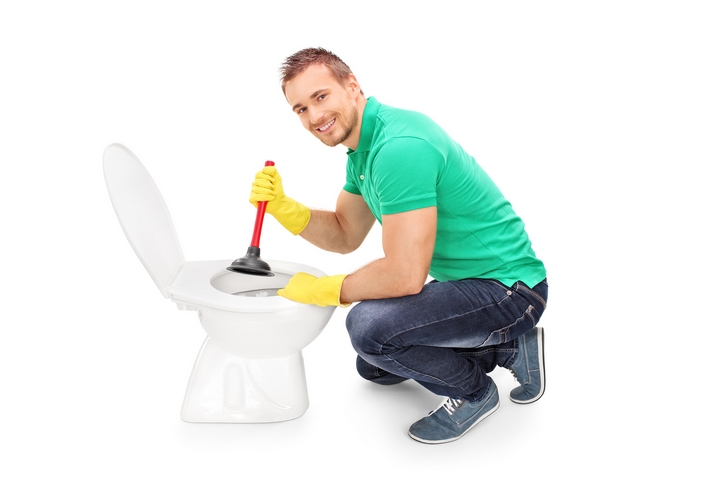Just about every person has got their own idea involving How to Unclog Your Sink with a Plunger.

Introduction
Appropriate upkeep of family drains is vital for avoiding clogs and making certain smooth water flow. One of the trick tools in every homeowner's toolkit is the bettor, together with various drainpipe cleaners made to deal with persistent blockages effectively. This post explores exactly how to use bettors and drainpipe cleaners properly to keep your drains streaming openly.
Area 1: Understanding Plungers
Kinds of Plungers
There are a number of types of bettors available, each developed for different types of drains and blocks. One of the most usual kinds consist of mug plungers, flange plungers, and accordion plungers.
How Plungers Job
Bettors work with the concept of producing pressure and suction to dislodge obstructions. When properly used over a drain, they create a vacuum cleaner that can take out debris or separate clogs.
Selecting the Right Plunger
Picking the best bettor depends upon the type of drainpipe and the nature of the blockage. Mug plungers are perfect for sinks and bathtubs, while flange plungers are much better fit for commodes because of their layout.
Common Blunders with Plungers
Preventing these blunders guarantees reliable plunging: improper seal around the drain, not enough force, and not clearing bordering particles.
Area 2: Using Plungers Successfully
Prep work
Before plunging, make certain the plunger covers the drain totally and develops a limited seal. Clear any kind of noticeable particles around the drainpipe opening.
Strategy
Start with mild plunging movements to develop suction. Boost pressure progressively, making use of a steady rhythm. Repeat as needed up until the drain gets rid of.
Troubleshooting Tips
If diving doesn't work, try readjusting the seal, applying petroleum jelly for a better seal, or making use of a different kind of plunger.
Section 3: Comprehending Drainpipe Cleaners
Sorts Of Drain Cleaning Company
Drain cleansers can be chemical or enzymatic. Chemical cleaners utilize solid chemicals to liquify clogs, while chemical cleansers make use of natural enzymes to break down raw material.
Just How Drain Cleansers Work
Chemical cleansers respond with obstructions to liquify them, while enzymatic cleansers break down natural products like hair and grease without damaging pipelines.
Security Factors to consider
Always put on gloves and eye defense when using chemical drain cleaners. Make sure appropriate air flow and adhere to manufacturer instructions thoroughly.
Eco-Friendly Alternatives
Consider using vinegar and cooking soft drink or enzyme-based cleansers for green options that are much safer for pipelines and the atmosphere.
Area 4: Utilizing Drainpipe Cleaning Company Efficiently
Application Strategies
Put chemical cleaners directly right into the drain opening. Enable them to work for the advised time before purging with hot water. Enzymatic cleansers must rest overnight.
Preventative measures
Prevent blending various sorts of cleansers, as this can produce poisonous fumes. Never ever make use of chemical cleansers in conjunction with a bettor, as spilling can take place.
Taking Care Of Stubborn Obstructions
For consistent blockages, think about using a pipes serpent or calling a specialist plumbing to prevent damages to pipelines.
Final thought
To conclude, comprehending how to use bettors and drain cleaners properly is important for maintaining healthy pipes systems. By selecting the right devices and techniques, house owners can take on small obstructions and protect against major pipes concerns down the line.
4 DIY Ways to Unclog Drains
Wire Hanger
This age-old technique has been used by many an amateur plumber – to much success. Take any wire hanger, deconstruct its shape and leave a small hook shape on the end. Time to go fishing! Remove the shower or sink drain cover and snake the wire into the drain, wiggling and rotating it as you push it through. Dispose of the gunk that you remove and flush the drain with hot water. Rinse with a pan of boiling water for best results.
Plunger
Creating a suction in your drain can break up clogs caused by hair and soap residue build up. First, make sure you are using the correct type of plunger, one specifically for sinks or tubs. They are typically smaller than regular toilet plungers and often have a shallow suction cup. Regular plungers can work too but we’d recommend cleaning them first and finding a way to create better suction over the drain.
Baking Soda and Vinegar
This technique is a classic – and one of the most popular DIY drain unclog methods. Pour one cup of baking soda and one cup of vinegar down the drain and allow it to work its magic overnight. The next morning, flush the drain with boiling water. Repeat if necessary.
Drain Snake/Hair Clog Tool
If you know your clog is caused primary by hair, a drain snake/hair clog tool might be your best option. These tools can be purchased for under $10 at any hardware store and work well so long as the clog isn’t too deep in the drain.
https://www.callcatons.com/blog/four-diy-ways-to-unclog-drains/

Hopefully you enjoyed our excerpt on How to Use a Plunger to Unclog a Toilet or Drain. Thanks a lot for spending some time to browse our piece of content. Sharing is caring. Helping people is fun. I praise you for your time. Please come visit our site back soon.
Book-Now
Comments on “Effective Plungers and Drain Cleaner Use: Crucial Tips”